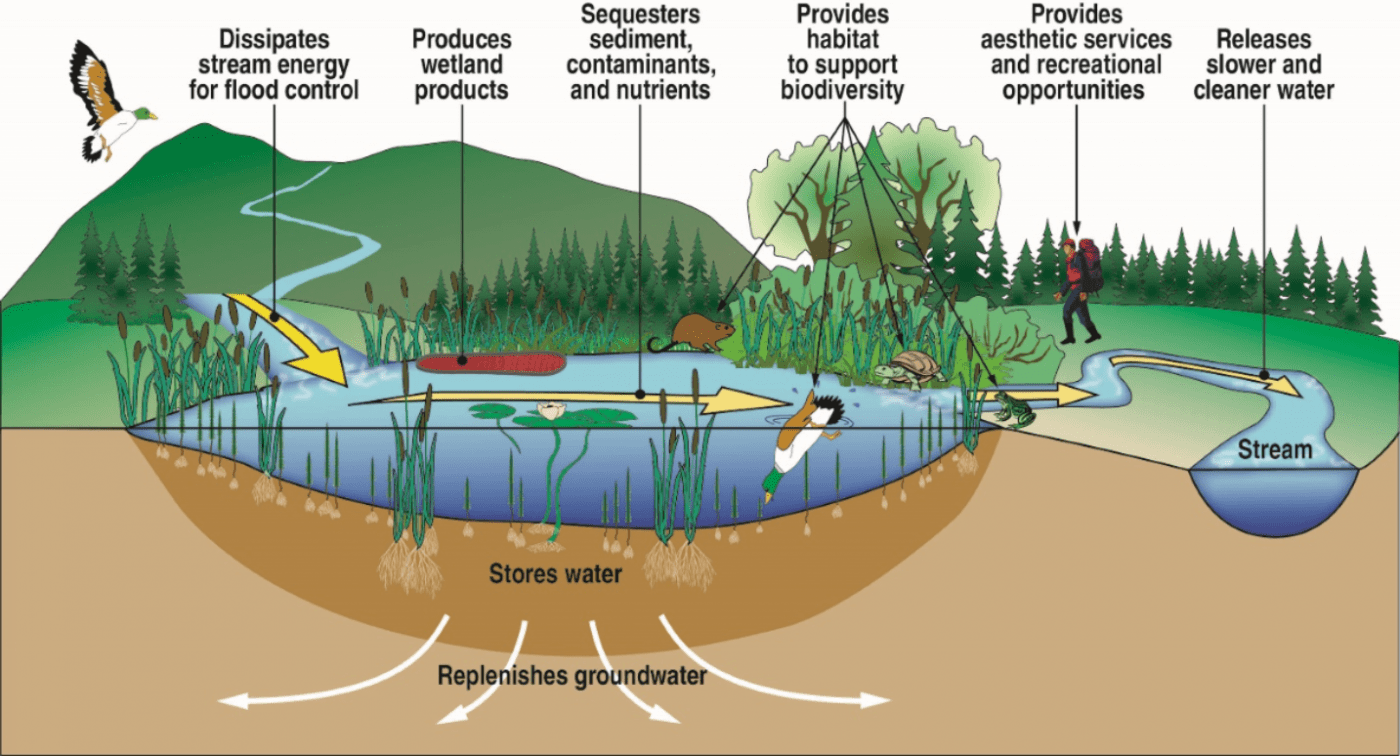Scottish Seagrass Restoration: A Bid To Revitalize Coastal Ecosystems

Table of Contents
The Importance of Seagrass Meadows in Scotland's Coastal Environment
Seagrass meadows are often referred to as the "nurseries of the sea," and for good reason. Their intricate structures provide essential habitat and food for a multitude of species, making them biodiversity hotspots.
Biodiversity Hotspots
Scottish seagrass meadows support an astonishing array of life. These underwater grasslands offer shelter and feeding grounds for numerous species, contributing significantly to Scottish marine life.
- Fish: Many commercially important fish species, such as cod, plaice, and sea bass, rely on seagrass beds for spawning and juvenile development.
- Invertebrates: A vast range of invertebrates, from crustaceans like shrimp and crabs to molluscs like scallops and sea snails, find refuge and sustenance within seagrass habitats.
- Birds: Seabirds, including wading birds and diving ducks, depend on seagrass meadows as a crucial foraging ground. They feed on the invertebrates and small fish that thrive in these environments.
This rich biodiversity contributes to the overall health and resilience of Scotland's coastal ecosystems. Protecting seagrass habitats is vital for maintaining species richness and the intricate balance of life within these areas. The health of Scottish seagrass directly impacts the health of Scottish marine life as a whole.
Coastal Protection and Erosion Control
Seagrass meadows act as natural barriers, significantly reducing wave energy and mitigating coastal erosion. Their dense root systems stabilize sediments, preventing coastal retreat and protecting valuable coastal infrastructure.
- Wave Attenuation: Seagrass blades dampen wave action, reducing the erosive power of waves on the shoreline. Studies have shown significant reductions in wave energy where healthy seagrass meadows are present.
- Sediment Stabilization: The extensive root systems bind sediment together, preventing erosion and maintaining the integrity of the coastline. This natural defense mechanism is crucial in protecting against storm surges and rising sea levels.
- Erosion Rate Reduction: Data suggests that areas with healthy seagrass meadows experience significantly lower rates of coastal erosion compared to areas where seagrass has been lost. This underscores the critical role seagrass plays in maintaining coastal stability.
Carbon Sequestration ("Blue Carbon")
Seagrass meadows are remarkably efficient carbon sinks, playing a significant role in mitigating climate change. They capture and store atmospheric carbon dioxide ("blue carbon") at a rate far exceeding that of terrestrial forests.
- Carbon Capture Efficiency: Scottish seagrass has a substantial capacity for carbon sequestration, effectively removing CO2 from the atmosphere and storing it in sediments.
- Long-Term Carbon Storage: The carbon stored in seagrass sediments is often sequestered for millennia, making seagrass meadows a crucial component of the global carbon cycle. The long-term nature of this carbon storage is vital in the fight against climate change.
- Comparison to Other Carbon Sinks: While terrestrial forests are important carbon sinks, seagrass meadows store carbon at a significantly higher rate per unit area, highlighting their disproportionate contribution to climate change mitigation.
Current Status and Threats to Scottish Seagrass
Despite their ecological importance, Scottish seagrass meadows are facing significant degradation. The extent of loss is alarming, with numerous factors contributing to this decline.
Extent of Degradation
Significant portions of Scotland's seagrass meadows have been lost in recent decades. This habitat loss has cascading effects on the biodiversity and ecosystem services provided by these vital areas.
- Loss Locations: Specific locations showing significant seagrass loss include areas impacted by increased coastal development, pollution runoff, and destructive fishing practices.
- Contributing Factors: The primary causes of seagrass decline include pollution (nutrient runoff, chemical pollutants), physical damage from boating activities and dredging, and the impacts of climate change (increased water temperatures, ocean acidification).
Key Threats and Challenges
Restoring Scotland's seagrass meadows faces many challenges. Addressing these obstacles is crucial for successful large-scale restoration projects.
- Funding Limitations: Securing sufficient funding for extensive restoration projects is a major hurdle. Research, monitoring, and the implementation of restoration techniques all require significant financial investment.
- Technological Challenges: Effective seagrass restoration requires advanced techniques and technologies. Developing and implementing these methods can be complex and costly.
- Public Awareness: Raising public awareness of the importance of seagrass and the need for conservation is crucial. Increased public support is essential to secure funding and drive political action.
Restoration Techniques and Initiatives in Scotland
Various techniques are employed in Scottish seagrass restoration projects, ranging from transplanting mature seagrass shoots to seeding efforts.
Active Restoration Methods
Several methods are used to restore degraded seagrass meadows. Each has its advantages and disadvantages, and the choice of method depends on the specific site conditions and resources available.
- Seagrass Transplantation: This involves transplanting healthy seagrass shoots from donor sites to degraded areas. This technique has proven effective in certain conditions, but it can be labor-intensive and requires suitable donor sites.
- Seagrass Seeding: This method involves scattering seagrass seeds in degraded areas. While less labor-intensive than transplantation, it requires careful monitoring and can be less predictable in terms of success rates.
Community Involvement and Partnerships
Scottish seagrass restoration relies heavily on collaborative efforts. Many projects involve community groups, scientists, and government agencies.
- Community-Led Initiatives: Several community groups are actively involved in monitoring seagrass meadows and participating in restoration efforts. Their local knowledge and enthusiasm are invaluable to the success of these projects.
- Scientific Collaboration: Researchers play a crucial role in guiding restoration efforts, providing scientific expertise, and monitoring the progress of projects.
- Government Support: Government agencies are increasingly recognizing the importance of seagrass and are providing funding and support for conservation and restoration initiatives.
Conclusion: Investing in the Future of Scottish Seagrass
Scottish seagrass meadows are vital components of our coastal ecosystems, providing essential services for biodiversity, coastal protection, and carbon sequestration. The ongoing decline of these vital habitats necessitates urgent action. Successful Scottish seagrass restoration requires sustained investment, technological advancements, and widespread public awareness. By supporting conservation efforts, participating in citizen science initiatives, and promoting responsible coastal practices, we can help protect and restore these critical ecosystems for generations to come. Let's work together to protect seagrass and ensure a healthy future for Scotland's coasts. Learn more about Scottish seagrass restoration initiatives and support conservation efforts today!

Featured Posts
-
 Ufc Fight Night Des Moines Predictions And Preview
May 05, 2025
Ufc Fight Night Des Moines Predictions And Preview
May 05, 2025 -
 Public Opinion Nba Fans On Russell Westbrooks Performance In Nuggets Warriors Matchup
May 05, 2025
Public Opinion Nba Fans On Russell Westbrooks Performance In Nuggets Warriors Matchup
May 05, 2025 -
 Understanding The Blake Lively And Anna Kendrick Rumored Feud
May 05, 2025
Understanding The Blake Lively And Anna Kendrick Rumored Feud
May 05, 2025 -
 Pacheco Mbilli Showdown A May Boxing Bout To Watch
May 05, 2025
Pacheco Mbilli Showdown A May Boxing Bout To Watch
May 05, 2025 -
 Ufc 313 Will Alex Pereira Get A Heavyweight Title Shot After Jon Jones Fight
May 05, 2025
Ufc 313 Will Alex Pereira Get A Heavyweight Title Shot After Jon Jones Fight
May 05, 2025
Latest Posts
-
 Max Verstappens New Daughter Name And Miami Gp Plans Revealed
May 05, 2025
Max Verstappens New Daughter Name And Miami Gp Plans Revealed
May 05, 2025 -
 Verstappen And Partner Welcome First Child Name Revealed Before Miami Gp
May 05, 2025
Verstappen And Partner Welcome First Child Name Revealed Before Miami Gp
May 05, 2025 -
 Verstappens Daughters Name A Grand Prix Announcement
May 05, 2025
Verstappens Daughters Name A Grand Prix Announcement
May 05, 2025 -
 Max Verstappen Welcomes Baby Girl Ahead Of Miami Gp
May 05, 2025
Max Verstappen Welcomes Baby Girl Ahead Of Miami Gp
May 05, 2025 -
 Formula 1 Star Max Verstappen Announces Babys Birth
May 05, 2025
Formula 1 Star Max Verstappen Announces Babys Birth
May 05, 2025
